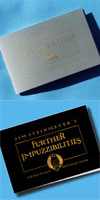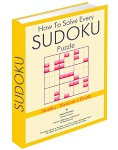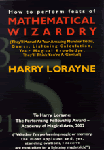 Jim Steinmeyer has released a sequel to his popular Impuzzibilities book, entitled Further Impuzzibilities, which are availble from most magic dealers, as well as directly from Jim Steinmeyer.
Jim Steinmeyer has released a sequel to his popular Impuzzibilities book, entitled Further Impuzzibilities, which are availble from most magic dealers, as well as directly from Jim Steinmeyer.
Jim Steinmeyer, for those who don't know, is one of the biggest names in illusions design. If you've ever seen a magic show that included any of these routines, you'll have an idea of just how original and creative he can be.
Both of the books in the Impuzzibilities series, however, are not illusions, but rather simple impromptu effects, many of which can be done over the phone! Impuzzibilities itself opens with “The Nine Card Problem”. As with many of the effects in this series, this is one of those effects that will fool you while you're doing it. This one has even been performed on David Copperfield's “Passions of Fire” special. The routine that follows, “The Full Deck Problem” expands the principle, and can be performed even if the deck you use is missing cards.
”Dime and Pennies” and “A Quarter to Nine” were a joy to discover. These routines use a radically new dressing for a very old mathematical principle. Even those posted on the classic principle may not catch it in these new guises. In both routines, you have someone get out a handful of coins, and ask them to take how much money they have, and then subtract the number of coins from that amount. You are then able to predict something about the total.
Moving from cards and coins to clocks, we have “The One O'Clock Mystery”, “The Three O'Clock Mystery” and “The King Mystery”. In these impromptu effects, you're able to predict where a spectator will land on a clock face (or other similar circular arrangements), despite an amazing freedom of choice by the spectator. The principle behind these pieces is also used in commercial effects, such as Eric Maurin's Watch Crystal.
”Understanding the Bermuda Triangle” is Steinmeyer's new dressing for an effect that has been performed longer than almost any other effect except Cups and Balls. In this routine, you arrange small paper airplanes in a triangular formation, and count them out, so that you know that all sides of the triangle have exactly the same number of planes. Despite more and more planes being added to the triangle, you can show that the number of planes remains quite constant.
The next four routines in Impuzzibilities all feature a gambling theme. Here you'll find new routines for the venerable Ten-Card Poker Deal and Monte-type effects. The “Three Card Monte” routine here deserves special mention. When performing this one over the phone, the person for whom you're performing will truly not know where the card is, yet you can control its location.
The first book in the series closes with “Teleportation”, an ingenious idea that allows you to magically and impossibly move a single card from one pile to another, even when performing this over the phone! Performed properly, this can be very effective and get a great reaction from your audience!
The new sequel, Further Impuzzibilities, starts with two routines based on the same principle, which allow you predict the outcome. In “The King's Coronation”, an audience member arranges the four Kings in their hand, and then eliminates them one at a time, yet you are able to determine which King is left. If you like this type of routine, but didn't bring your deck of cards, “Automatic Palmistry” is the answer, as this version of the routine requires absolutely no props!
”Princess In A Crowd” is a routine in which you divine the location of a mentally chosen card among a group of 15. This one reminds me a little too much of the hoary 21-card trick, but the presentation is much more streamlined.
In “Coins in a Strange Land”, “Piles of Money” and “Five Cards on the March”, a principle originally created by Stewart James is applied to cards and coins, giving you a very clean way in which to determine the outcome of choices made by the spectator. The best of these three, in my opinion, is “Piles of Money”, as the handling appears the most carefree of the group.
If you would like to be able to determine a word chosen from someone else's dictionary, even when done over the phone, you may enjoy the ingenious “Lesser Dictionary Test”. The freedom allowed in making the choices is quite startling, but I've never really cared for book tests in which random numbers are chosen and had mathematical operations performed on them. Having said that, the principle used in this routine could be adapted to more effective uses, so it's still worth a look.
Those who enjoyed the “Ten Boys Poker Deal” from Impuzzibilities, but prefer the game of “21”, will be glad to see the “'Five Fiends' Play Blackjack” routine. This is a three-phase routine in which the performer repeatedly deals two Blackjack hands and wins by a very small margin. For the finale, the performer uses all the cards to reach a perfect 21. If you enjoy routines like “Ten Boys” and “Five Fiends”, I recommend getting Stack Attack for a deeper examination of the principles behind these routines.
The last two routines are a wonderful example of saving the best for last. “The Great Silverware Scam” is a rarity. After all, how many routines can you name that are flexible enough to be done in a stand-up, stage or close-up performance, AND yet can still be done over the phone? This is a variation of the venerable Piano Card Trick, but it's done with silverware to add a touch of universal experience to the routine. Michael Weber has a similar presentation with socks that you may want to try and find, and which also has some added work that you may be able to apply to this routine.
Finally, we come to “The Thirteen Card Dilemma”. As written, this is simply a whimsical counting demonstration with playing cards or business cards. There are three phases. In the first, you start with 13 cards, and, despite the fact that you're removing cards one at a time, you keep winding up with one MORE card each time. In the second phase, you add one card at a time back to the pile, and yet the result is that you have one card LESS. The final phase starts with the removal of two cards from the pile, yet the same number of cards remain in your hand. Two more cards are removed, and sure enough you still have the same amount of cards in your hand. The conclusion of the final phase happens when you add two cards, and actually wind up with two more cards, which then suddenly disappear when set in the spectators hand!
There are several great things about this routine. First, there is no sleight of hand required. The false counts in the routine are mathematical, and require practice so that you know how to apply them at each stage. My favorite aspect is the nature of the routine itself. You aren't trying to convince your audience that you're really counting the cards properly each time. They understand they're being hoodwinked, and probably even understand to some degree how they're being hoodwinked, yet they are amazed at the variety and flexibility that is possible with the nature of the scam. The fact that they count the cards themselves to verify that the number of cards you claim is correct helps heighten the amazement.
Having said that, the presentation as written will probably be ignored by the magicians who read this book, as it can seem a little silly and meaningless. However, while talking with Lew Brooks and Will Gordon, both of whom you may know from the Stack Attack DVD, we have managed to come up with an excellent presentation for this. Instead of playing cards, our idea was to use bills (preferably new, crisp bills, in order to make the handling easier), and talk about the dangers of smooth talkers who use their wit and charm to separate you from your money in various ways. This presentation actually works with the nature of the routine I described earlier, and strengthens and focuses the routine in the audience's mind.
All in all, I highly suggest getting both Impuzzibilities and Further Impuzzibilities for not only the included effects themselves, but also for the inspiring nature of the routines, as well.

 Yes, you read correctly. Over the past few days, I've added 2.5 items to my line of goods over at the Grey Matters Online Store.
Yes, you read correctly. Over the past few days, I've added 2.5 items to my line of goods over at the Grey Matters Online Store.


 Thanks to the hard work of the folks over at
Thanks to the hard work of the folks over at 


 Here's something you don't see often - a new, original memory demonstration! I came up with this idea while reading
Here's something you don't see often - a new, original memory demonstration! I came up with this idea while reading 

 Harry Lorayne's newest book is called, "How to perform feats of Mathematical Wizardry". I've finally managed to get my hands on a copy, so here's the review I promised in
Harry Lorayne's newest book is called, "How to perform feats of Mathematical Wizardry". I've finally managed to get my hands on a copy, so here's the review I promised in 


